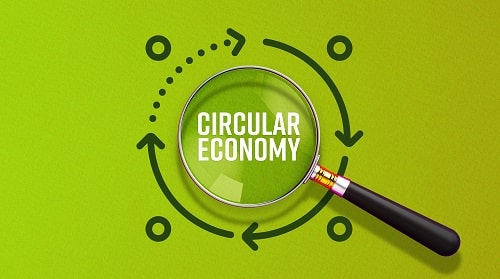This year, many businesses look set to place even greater emphasis on sustainability performance and the wider use of new technology to ensure safety at work, but concerns remain about the potential safety risks as the energy sector makes the transition to cleaner and greener energy sources.
Features
Five key predictions for the safety sector in 2024
The topic of health and safety in UK workplaces begins the year in sharp focus for many businesses. With growing pressures across a range of areas, in particular, economic and environmental, budgets are tightening and sustainability goals increasingly dominate Board agendas.
In the meantime, safety – a topic that has taken centre stage in the past few years both during and since Covid – is not an issue that can be neglected, or compromised, in order to achieve other competing economic or environmental goals.
The Health and Safety Executive’s latest annual work-related ill health and injury statistics recently revealed an increase in the rate of workers who reported suffering from work-related ill health in Britain in 2022/23 compared with the 2018/19 pre-coronavirus level, with the estimated economic impact reaching £20.7 billion – a £1.9 billion increase compared with 2019/20.
 Photograph: Dräger Safety
Photograph: Dräger Safety
A large proportion of this ill health is due to mental health issues, and the rise in mental health conditions is likely to continue to provide massive challenges to UK businesses in the coming years. In fact, 63 per cent of all respondents to Dräger Safety UK’s Safety at Work study in 2023 think an increase in anxiety and depression in workplaces may have a negative impact on safety at work – with this conclusion higher in those with anxiety and depression (72 per cent), in under 35s (68 per cent) and among managers (67 per cent).
Given this context, and as the safety sector continues to evolve and advance, there are several important areas that must be prioritised by employers and occupational safety and health (OSH) practitioners in 2024:
1. AI and technology
AI and technology offer significant potential for both improving safety and reducing cost, and we expect the pace of adoption of such technologies in safety settings to increase in 2024.
We’re already seeing growing adoption of technology to, for example, facilitate the rapid deployment of new software or updated safety standards and thresholds across connected safety networks of smart devices (such as gas detection and monitoring devices), as well as a growing interest in cloud-based management dashboards displaying summary information relating to the safety of an entire team of colleagues working remotely in the field.
And while it is clear that many see the benefits of such technologies (65 per cent of people involved in the Safety at Work research said that AI and immersive technology can play a key role in improving safety), it’s vital that people are kept on board throughout its adoption and that they understand the applications and benefits of such technology. With the vast majority expressing the view that safety is best achieved through a balance of smart technology and human oversight, achieving the right balance here is vital.
2. Sustainability
While not specific to the safety sector, the year ahead is, without doubt, going to require those operating in supporting industries, such as safety, to step up when it comes to supporting the sustainability goals of the businesses they supply products and services to.
This is particularly pertinent for the safety sector as its activities are, after all, about preserving resources (both human life and assets), so it makes sense to ensure that this preservation extends to the planet, too.
Examining every aspect of provision, from equipment packaging to product recycling schemes, as well as the sustainability of supply chains, is becoming increasingly important, and is only set to grow.
In the same vein, product quality and lifespan are also coming under scrutiny, and it will be vital to ensure that products offer good value in terms of total cost of ownership (as opposed to just initial up-front value). One trend that we’re seeing is an increasing demand for maintenance and servicing contracts for safety equipment, with companies increasingly looking to ensure that safety equipment continues to be well-maintained, in order to extend its life span, and therefore supporting both budget and sustainability goals.
 David Head is head of safety marketing at Dräger Safety UK & Ireland
David Head is head of safety marketing at Dräger Safety UK & Ireland
3. Energy transition industries
Another key area of focus this year is likely to be around new safety standards and protocols relating to the energy transition industries. While new and clean energy (such as hydrogen) may be perceived as being green, clean and safe, the reality is that, in many respects, it is no less risky than legacy industries such as oil and gas. It’s therefore vital that safety is not only made a key priority in such industries, but that every opportunity for safety knowledge transfer from other industries can take place.
The increasing enquiries that we’re seeing from this sector indicate that businesses are actively seeking knowledge and guidance. However, it is telling that Dräger Safety UK’s research indicates that there are higher levels of concern of a major safety incident occurring in this sector compared with other industries.
4. Skills
There has been much discussion over recent years around the issue of skills shortages in the safety sector, and in particular of older, more experienced workers leaving the industry. This has the potential to present a real challenge to newer industries such as in the cleantech space.
Safety training is therefore an area which we expect to come into sharper focus than perhaps ever before in 2024, and with recent advances seen in the provision of online, as well as in-person training courses, this is a trend that much of the sector is well prepared for.
5. Making safety easier
At a time when the business landscape is changing, and evolving issues (such as those outlined above) are adding pressure, it is crucial that industries such as safety work to make life as easy as possible for the organisations they work with.
Companies operating in the safety sector often have huge amounts of knowledge and expertise, and this offers significant scope to help and support – to essentially shoulder some of the burden.
David Head is head of safety marketing at Dräger Safety UK & Ireland
Dräger’s Safety at Work report is at: draeger.com/Content/Documents/Content/DSAW23.pdf
FEATURES

How to build circular economy business models
By Chloe Miller, CC Consulting on 07 April 2025
Widespread adoption of a circular economy model by business would ensure greater environmental and economic value is extracted and retained from raw materials and products, while simultaneously reducing carbon emissions, protecting the environment and boosting business efficiency and reputation.

What does the first year on an accelerated net zero path have in store for UK businesses?
By Team Energy on 07 April 2025
The UK is halfway to net zero by 2050 and on a new, sped-up net zero pathway. In light of this, Graham Paul, sales, marketing & client services director at TEAM Energy, speaks to TEAM Energy’s efficiency and carbon reduction experts about the future of energy efficiency and net zero in the UK.

Aligning organisational culture with sustainability: a win, win for the environment and business
By Dr Keith Whitehead, British Safety Council on 04 April 2025
The culture of an organisation is crucial in determining how successfully it implements, integrates and achieves its sustainability and environmental goals and practices. However, there are a number of simple ways of ensuring a positive organisational culture where everyone is fully committed to achieving excellent sustainability performance.



